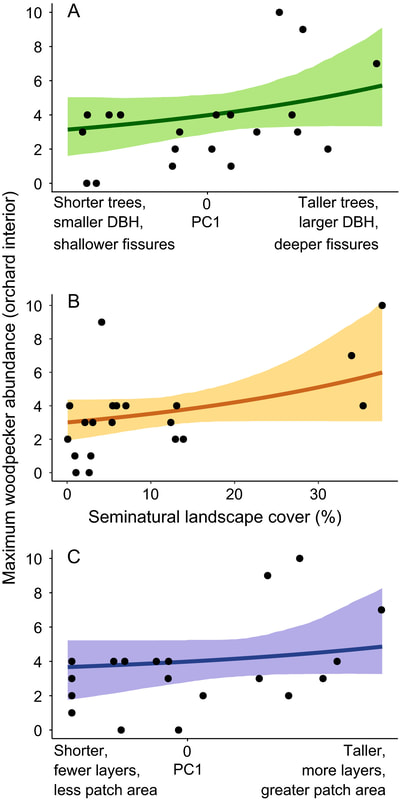11% (caged) to 46% (no cage), and predation increased with increasing proportions of seminatural habitat within 500‐m of orchard transects. Predation also increased as the size and bark furrow depth of walnut trees increased, likely because these characteristics were associated with increasing abundance of avian predators with functional traits specific to consuming tree‐dwelling cocoons (e.g., woodpeckers). The presence and increasing complexity of local margin habitat increased the species richness and abundance of avian predators but was not predictive of cocoon predation. Consistent with intermediate landscape‐complexity hypothesis predictions, the effect size of woodpecker abundance on predation was large in simple landscapes (1–20% seminatural cover) and low in complex landscapes (>20% cover). Contrary to predictions, effect size was large in cleared landscapes (<1% cover), suggesting that orchards supported predators in cleared landscapes, with positive effects on pest reduction. We provide evidence that increasing the abundance of avian predators with traits specific for consuming target pests—by retaining old trees and seminatural cover—can increase orchard pest reduction services in an intensive agricultural region.
0 Comments
Your comment will be posted after it is approved.
Leave a Reply. |
|

 RSS Feed
RSS Feed